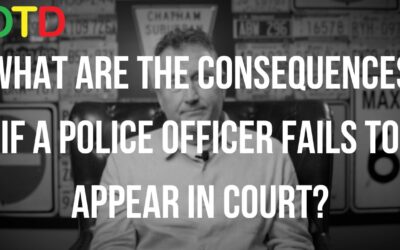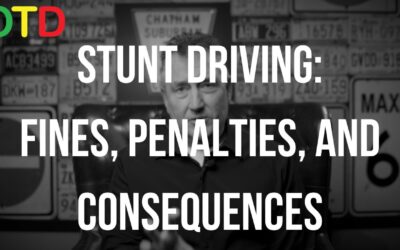What Is The Move Over Law In Ontario?
The Move-Over Law is an important regulation designed to protect emergency personnel and tow truck drivers working on highways. This law mandates specific actions drivers must take when approaching stationary vehicles with activated emergency or warning lights. Failing to comply with these requirements can lead to significant fines, demerit points, and other legal consequences.
Your Obligations as a Driver
When you encounter an emergency vehicle or a tow truck with its lights activated on the highway, you are legally required to:
1. Slow Down
Reducing your speed is the first and most important step. You should slow down immediately upon seeing flashing lights ahead, signaling a need for heightened caution.
2. Move Over
- On a Single Lane Highway: If the road consists of one lane in each direction, you must slow down and move over as far as possible, ensuring you pass the stationary vehicle at a slow, controlled speed.
- On a Multi-Lane Highway: For highways with two or more lanes traveling in the same direction, you are required to change lanes to create space between your vehicle and the emergency or tow vehicle, in addition to slowing down.
Common Misconceptions and Clarifications
Many drivers underestimate the extent to which they must slow down when passing an emergency scene. Reducing your speed by a small amount, such as five kilometers per hour, is often not seen as enough in the eyes of law enforcement. Officers looking out for compliance with the Move Over Law will expect drivers to significantly reduce their speed and, if possible, change lanes to ensure the safety of those on the road’s shoulder.
The Reasoning Behind the Law
The Move Over Law is about safety. Emergency responders, including police officers and tow truck drivers, often work in vulnerable positions close to traffic. By slowing down and moving over, drivers provide these workers with a safer environment, potentially preventing serious accidents or fatalities.
For any questions about the Move Over Law or if you received a traffic ticket, consulting with experienced paralegals like those at OTD Legal can provide clarity and support. Our team is dedicated to offering guidance and representation for traffic related legal matters, ensuring your rights are protected.
Contact OTD Legal for a free and confidential consultation.
Video Transcription:
What is the move-over law in Ontario? It’s a common question, it simply refers to your obligation when you’re driving on any of the highways and you run into either a tow vehicle with its lights activated or a police or emergency vehicle with their lights activated. And there are obligations on any driver on how to approach those situations and they are in law, which means if you don’t follow that law, okay, then you could expect to be charged. So, the sections that of the Highway Traffic Act that covers this type of action that you must take, which is considered the Move Over Law, are Sections 159, Subsection 2, and Subsection 3.
And, really the two areas that you would encounter situations like this, common sense generally prevails. If you see emergency vehicles or you see flashing lights, one of the instinctual things that almost all drivers do is they slow down, which is expected and in fact demanded in the legislation. A, you must slow down.
If you are traveling in what I call a single lane, where there is only two lanes, one in each direction, and you will be passing that particular emergency vehicle. Your obligation is to first slow down, and then move over as far as you can, outside of the way, at a slow, reasonable, and controlled speed, that everyone is safe at all times.
The next possibility would be if you’re on a two lane highway, meaning two lanes going one direction, two going the other. So arguably four lanes in total. If you’re in one of those lanes going that way, your obligation would be to change lanes and to slow down as you pass that particular area. I’ve had many clients that have asked me, well, what was I supposed to do? I saw this going on and I did slow down and I slowed down, you know five kilometers. Well, the reality is, if an officer sees that, they’re going to explain things to you by handing you a ticket and simply say that that is simply not good enough. You have to drive with caution and expect the worst.
There could be a police officer stepping out. That officer could be responding to an emergency situation. His eyes may be focused on what’s happening in front of him and he may have to step out into that lane. That’s why you need to slow down and move over and if that officer steps out into that lane, in an emergency situation, you could put him in harm’s way.




